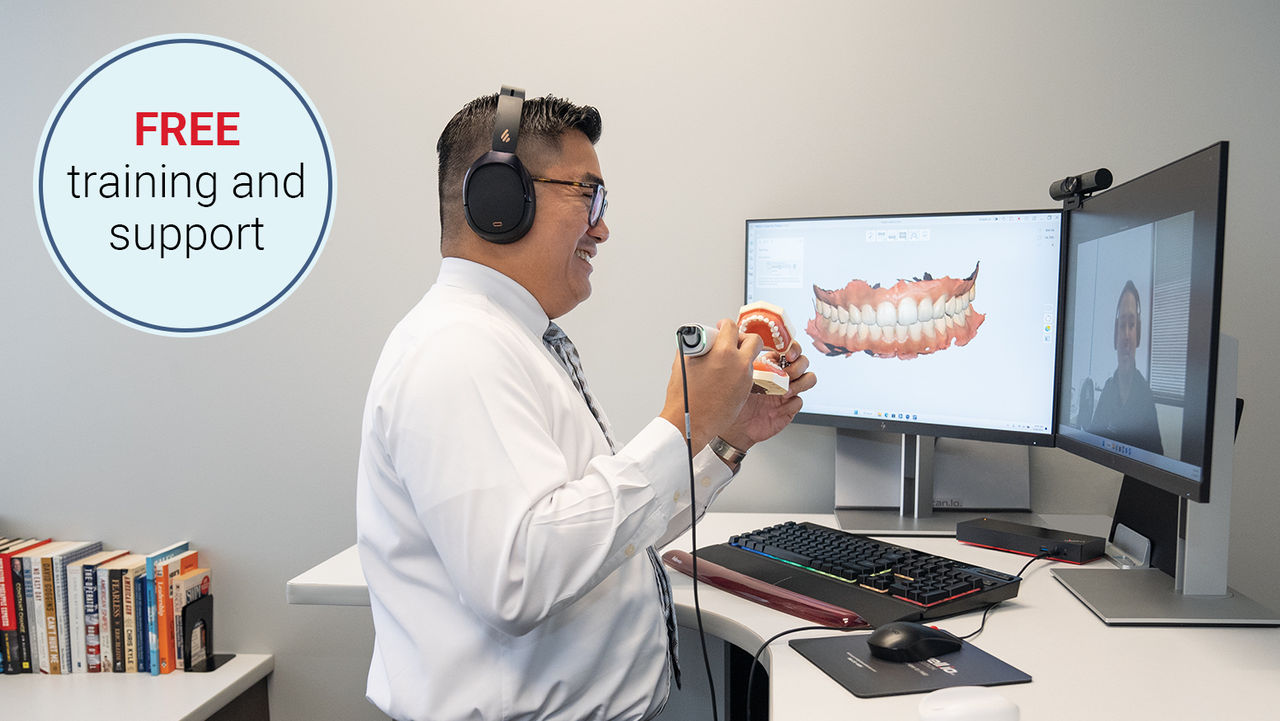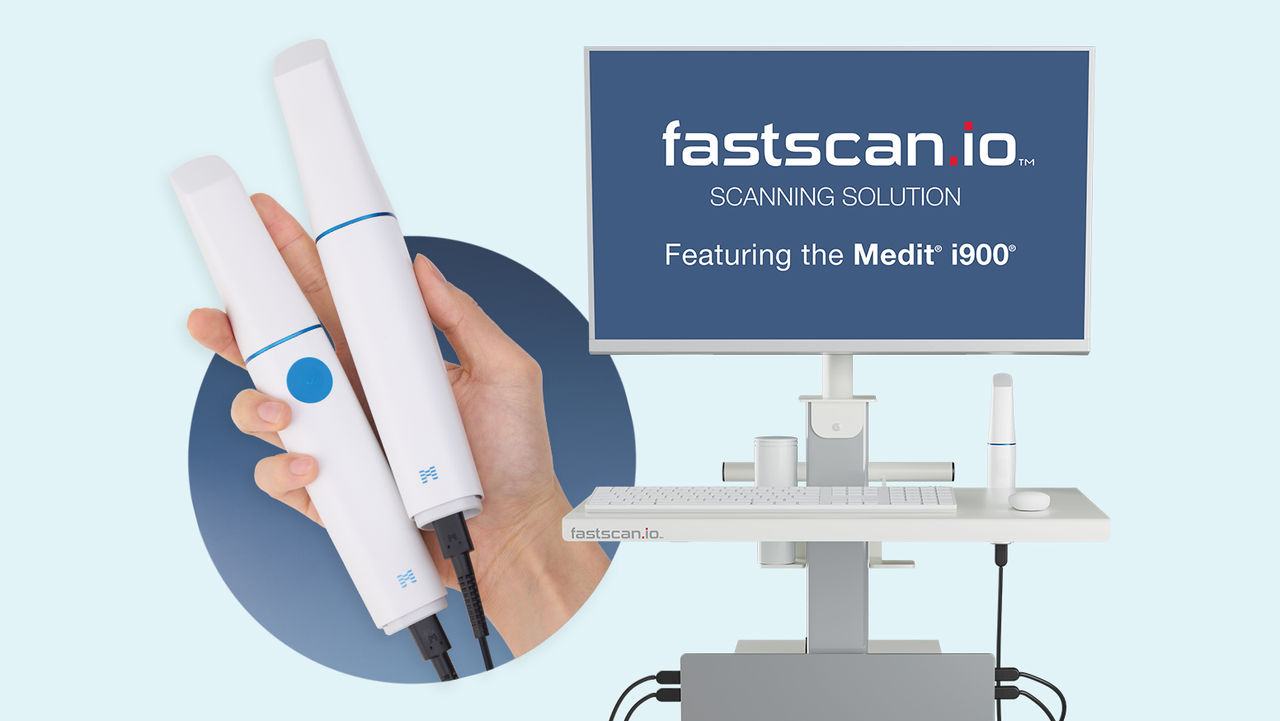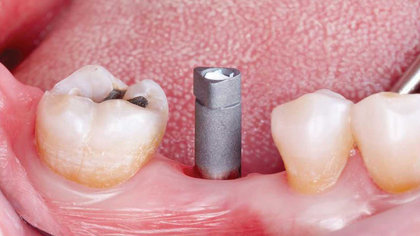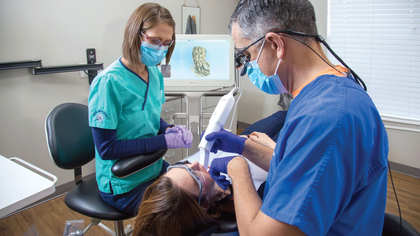Related Dental Articles
- Eric Relyea: "5 Common Questions About Chairside CAD/CAM Systems"
- “Fulfilling the Promise of Single-Visit Dentistry with the glidewell.io™ In-Office Solution”
Blog Posts
800-854-7256 USA
Considering a second intraoral scanner? Discover the truth behind common myths and learn how the right technology can make all the difference.


By now, most dentists are well aware of the advantages of using an intraoral scanner — greater convenience than physical impressions, no messy trays, fewer remakes, instant scan submission to the lab, and a more comfortable experience for the patient. But while adopting one scanner is a no-brainer for many practices, the idea of investing in two scanners often raises eyebrows. Is it overboard? Does it really make a difference? Let’s debunk some of the common misconceptions about owning two intraoral scanners and explore how this move could be a strategic advantage for your practice.
It’s true — purchasing a second intraoral scanner can be a significant investment. However, many practices find that the return on this investment arrives faster than expected. Having two scanners helps reduce workflow bottlenecks, allowing for smoother, faster patient visits. Instead of having patients wait while a single scanner is in use, multiple scans can be completed simultaneously or in quick succession — a major advantage during high-volume days or in multi-operatory setups.
For example, a hygienist can complete a preliminary scan during a cleaning while the doctor uses the second scanner for a restorative procedure. This division of labor not only improves efficiency but also shortens appointment times, which leads to higher patient satisfaction. In the long run, this operational flexibility can increase daily production and help practices grow without added stress or staffing.
It’s natural to be concerned about complexity and the learning curve when adding more technology. Fortunately, modern intraoral scanners are designed with ease-of-use in mind.

For example, the fastscan.io™ Scanning Solution includes unlimited training and support directly from Glidewell, ensuring your team gets manufacturer-direct help when they need it — not from an overseas call center. Intraoral scanners now often come with intuitive interfaces and cloud-based platforms like MeditLink, so staff can access scans from different workstations with ease. Once your team is comfortable with one scanner, adapting to a second is usually just a matter of minutes — not days.
Worried that your second scanner will collect dust? Think again. Not all scanners are built for the same purpose. Some are optimized for implant workflows, others for restorative cases, edentulous scans, or ortho imaging. With two scanners, you can tailor your technology to fit different types of procedures.

For example, a practice might rely on iTero for ortho cases and integrate fastscan.io for same-day restorative treatments. This specialization allows your team to maximize the strengths of each scanner and avoid overloading a single device. Plus, you’ll avoid bottlenecks when multiple patients need digital impressions simultaneously. By spreading the workload and optimizing scanner capabilities, your second scanner becomes a time-saver — not a paperweight.
Another key reason to consider adding a second intraoral scanner is scalability. As your practice grows — whether you're adding more operatories, increasing your patient load, or expanding your services — having multiple scanners ensures you're equipped to handle it.
A second scanner gives you the flexibility to bring in new associates or hygiene staff who can contribute to scan acquisition without disrupting current workflows. It also positions your team at the forefront of modern dentistry — where digital workflows are the standard, not the exception. Early adoption of scalable tech gives your practice a competitive edge and ensures smoother growth when the time comes.
At first glance, owning two intraoral scanners might seem excessive. But when you consider the gains in speed, flexibility, and long-term savings, the decision starts to make a lot of sense. By eliminating bottlenecks, improving patient satisfaction, expanding your treatment capabilities, and preparing your practice for growth, a second scanner is more than a backup — it’s a business accelerator. Whether you’re managing a single operatory or planning to scale your practice, investing in a second intraoral scanner could be one of the most impactful decisions you make.
Related Dental Articles
Blog Posts
Send blog-related questions and suggestions to hello@glidewell.com.



